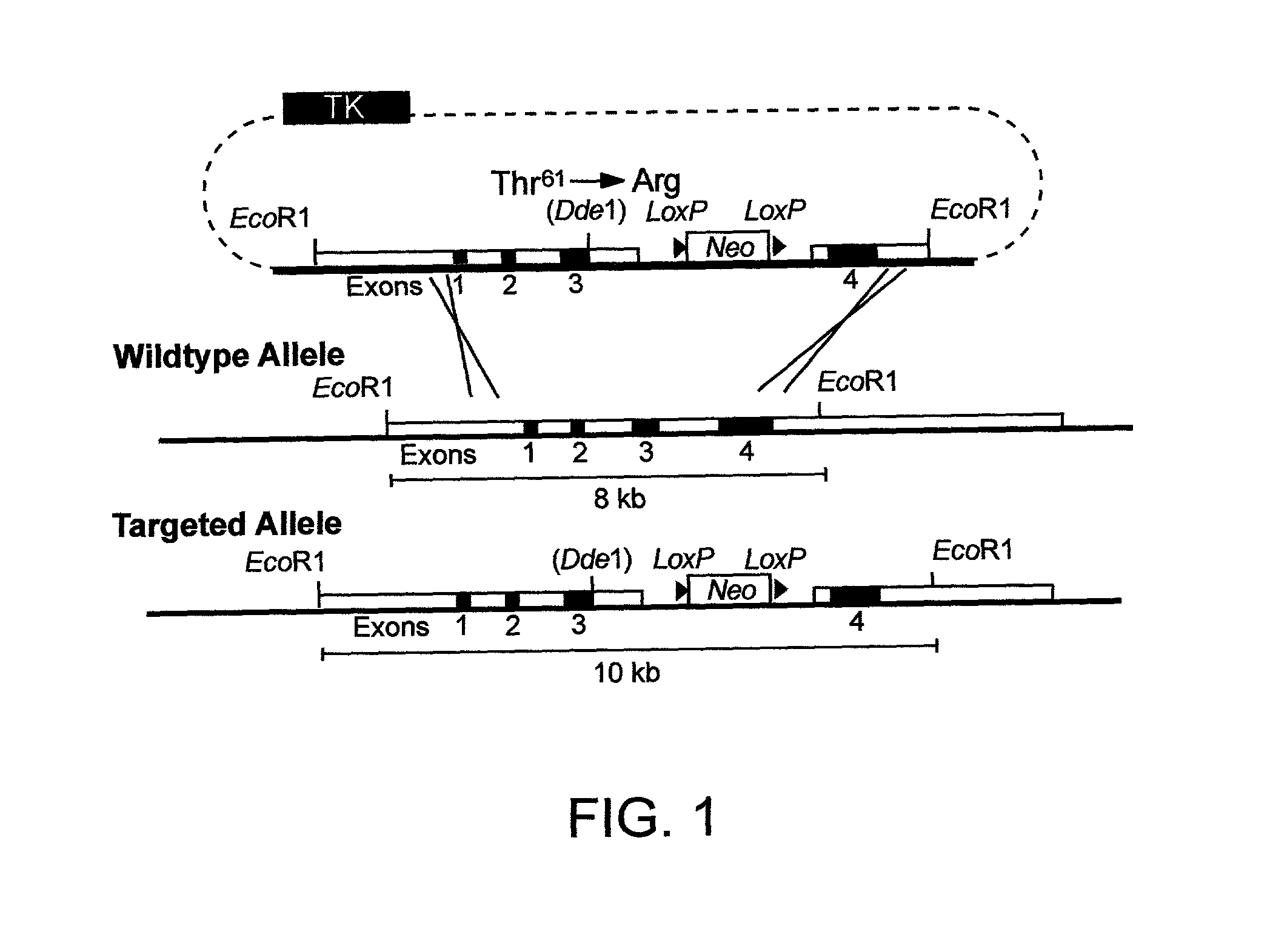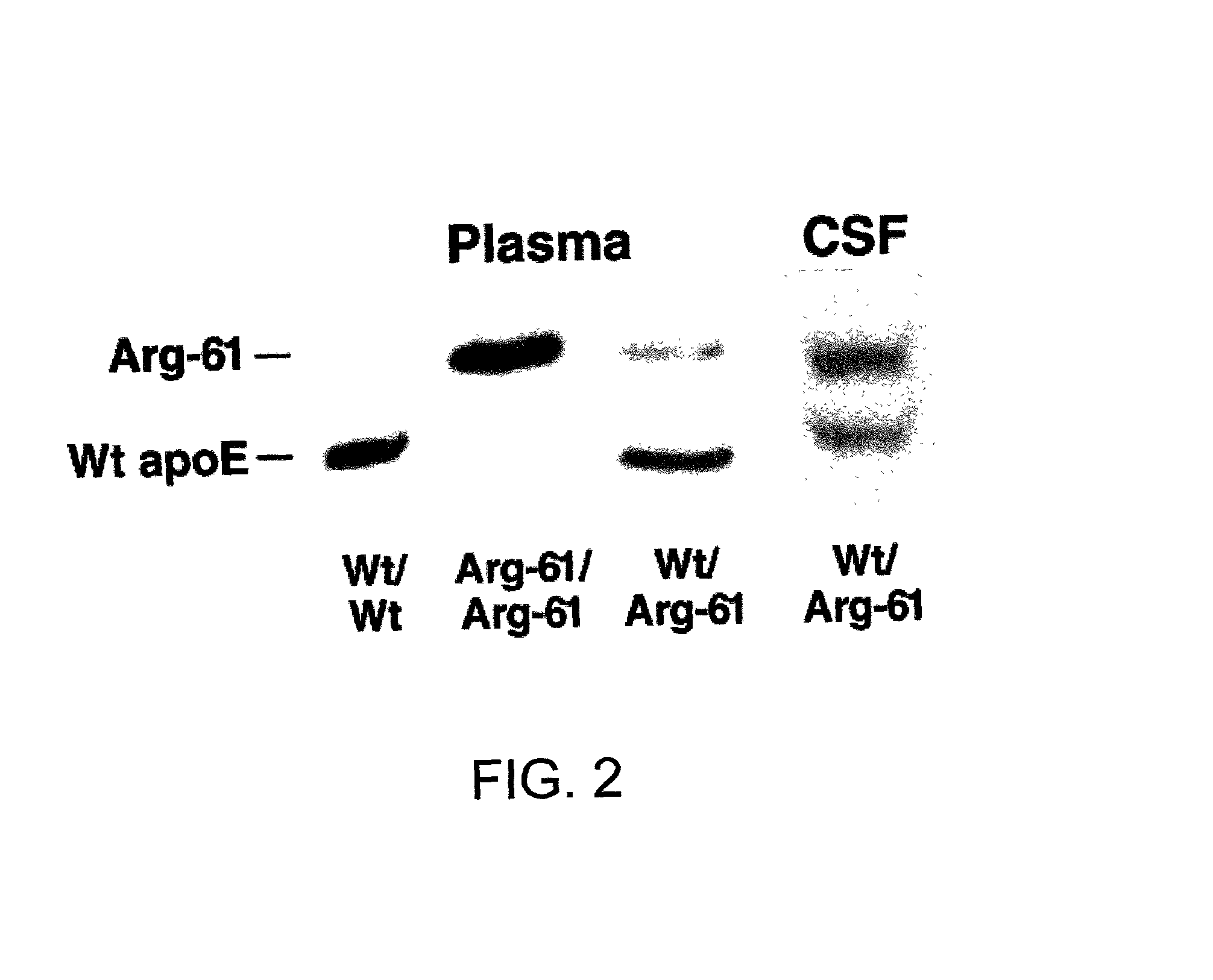Gene-targeted animal model of apolipoprotein E4 domain interaction and uses thereof
a technology of apolipoprotein and domain, applied in the field of gene-targeted animal models of apolipoprotein e4 domain interaction, can solve the problems of confusion and restlessness, impaired cognition, and impaired ability to function, and achieve the effect of reducing serum cholesterol level
- Summary
- Abstract
- Description
- Claims
- Application Information
AI Technical Summary
Benefits of technology
Problems solved by technology
Method used
Image
Examples
example 1
Targeting the Mouse Apoe Gene Locus to Introduce Arg-61
[0211] The gene-targeting vector that was designed is shown in FIG. 1. Like human Apoe, the mouse gene contains four exons and three introns, contained within an 8-kb EcoR1 fragment. The codon for the Thr-61 equivalent in the mouse gene is located at the end of the third exon, exactly as it is in the human gene. Mutation of the ACG threonine codon to a AGG arginine codon resulted in introduction of a unique Dde1 restriction site, which was used as a diagnostic marker. A thymidine kinase (TK) gene was used as a negative selection marker, and the Neo gene was used as a positive selection marker. The Neo gene was placed within the third intron close to the mutation site to reduce the probability that it would be separated from the mutation during recombination. The Neo gene was flanked with loxP sites (the recognition sequence for the site-specific DNA recombinase, Cre) to allow its removal by Cre-mediated recombination by crossing...
PUM
| Property | Measurement | Unit |
|---|---|---|
| Interaction | aaaaa | aaaaa |
Abstract
Description
Claims
Application Information
 Login to View More
Login to View More - R&D
- Intellectual Property
- Life Sciences
- Materials
- Tech Scout
- Unparalleled Data Quality
- Higher Quality Content
- 60% Fewer Hallucinations
Browse by: Latest US Patents, China's latest patents, Technical Efficacy Thesaurus, Application Domain, Technology Topic, Popular Technical Reports.
© 2025 PatSnap. All rights reserved.Legal|Privacy policy|Modern Slavery Act Transparency Statement|Sitemap|About US| Contact US: help@patsnap.com



